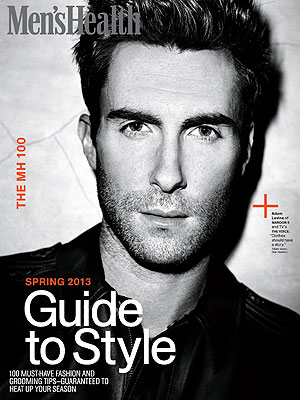RIO DE JANEIRO — David McLaughlin was thrilled to be in Brazil. He had arrived here from Ohio State University on a Fulbright grant to research Brazilian hip-hop music with his wife, Sarah Lowry, a scholar of Russian literature. The graduate students, newlyweds, set out one morning in June 2010 to search for an apartment in the beachfront neighborhood of Copacabana.
Then, while crossing a bustling avenue, the asphalt under their feet started to tremble. A fireball surged suddenly from a manhole, enveloping Ms. Lowry in flames. Mr. McLaughlin leapt on her and extinguished the fire. But Ms. Lowry had burns on 80 percent of her body and spent 70 days in the hospital here. Mr. McLaughlin was burned on 35 percent of his body.
“The explosion was one of the most traumatic experiences I can imagine,” Mr. McLaughlin, 34, said in a telephone interview from New York, where he and his wife now live. “Almost three years later, recovering is made more complicated every time we learn there’s been a new explosion on the streets of Rio.”
Since 2010, manhole explosions here have shattered windows, flattened cars and injured passers-by. An explosion in 2012 killed a worker at Rio’s port. While the rate of explosions has slowed, the city was rattled yet again in December after a manhole erupted behind the Copacabana Palace, the neo-Classical-style gem that is arguably Rio’s most luxurious hotel. A motorcyclist narrowly escaped the recent blast, filming with his cellphone his motorcycle going up in flames.
Such explosions are not unique to Rio. Indeed, engineering experts say few large cities are immune. Gas from any number of sources can collect underground. Electrical cables, often running in the same pipes, can fray with age, producing a spark that can set off an explosion, shooting up fire and flinging hundred-pound cast-iron manhole covers high into the air.
But Moacyr Duarte, a senior researcher on the city’s infrastructure at the Federal University of Rio de Janeiro, said dozens of explosions here, which often occurred in densely-populated areas, had “clearly gone beyond what it is statistically reasonable,” before recently declining.
The explosions have set Cariocas, as the residents of this traditionally relaxed city are known, on edge, and the blasts point to the broader problem of dilapidated infrastructure even as Rio emerges from a long economic decline.
As Rio prepares for its cameo as host of the 2014 World Cup and the 2016 Summer Olympics, the expansion of offshore oil production has pumped life into its economy. The city has sought to revitalize neglected areas with projects like a new cable car system in Complexo do Alemão, a patchwork of slums, while a real estate boom has attracted the likes of Donald J. Trump, who plans to build five skyscrapers.
At the same time, Rio’s resurgence has only added to the stress on its aging infrastructure.
While passenger traffic at Rio’s international airport climbed 20 percent last year, it has been plagued by blackouts in recent weeks, escalators and elevators work sporadically, and vultures have descended through holes in the airport’s roof.
Rio’s car fleet grew 56 percent in the last decade, but road building and public transportation improvements failed to keep pace, intensifying traffic jams. Last year in downtown Rio, a 20-story office building just collapsed one night, knocking down two other buildings and killing 17 people.
Amid such challenges, erupting manholes have endured as just one more bizarre and potentially dangerous feature of the cityscape.
Some Cariocas have found dark humor in the sheer randomness. A video game for Facebook, “Rio Boom-eiro Challenge,” involves the nimble avoidance of sidewalk explosions.
Others have found artistic inspiration. Fábio Maia, an advertising executive, has been putting stickers in the shape of a lighted fuse alongside manholes. The idea came to him one day after he was dodging manholes while out with his son in a stroller. “I started asking myself, ‘What kind of craziness is this?’ ” he said.
Mr. Duarte, of Federal University, said many of the manhole eruptions have been caused by leaks of gas or oil into overloaded underground networks, some built as far back as the 1920s.
After a surge in street explosions in 2010 and 2011, Rio’s mayor, Eduardo Paes, and prosecutors pressured utility companies into agreeing to pay fines of about $50,000 for each explosion, in addition to damages to victims.
(The electric company, Light, said it had not yet reached an agreement to pay damages to Mr. McLaughlin and Ms. Lowry.)
Mr. Paes’s office said in a statement that the “worst phase” of the manhole crisis was over, explaining that an emergency operation in 28 neighborhoods that ended last year identified 314 manholes with a great risk of explosion, and that crews were sent to fix each one.
Still, the mayor’s office acknowledged that the issue “hasn’t been completely addressed,” prompting Mr. Paes to raise the fine for each explosion to $250,000 and to advance a project mapping the city’s entire underground network.
Light said it had undertaken a $115 million investment program in the last two years aimed at preventing more explosions.
The company declined to provide figures on how many explosions had occurred recently on Rio’s streets, but it argued that they had become less frequent. “Eventualities in subterranean chambers occur around the world,” the company said.
Manholes continue to explode. The mayor’s office acknowledged that at least five blasts occurred in 2012, leaving one person dead and several injured. The explosion in December in Copacabana, one of Rio’s most populous districts, sowed panic among passers-by.
Antônio Carlos Costa, president of Rio de Paz, a human rights group that has painted Rio’s manhole covers red to bring attention to their potential danger, said the blasts offered a view into the perils that the new economic climate has been unable to resolve.
“In Brazil we have two types of violence,” he said, “intentional violence and violence that is a product of neglect. This is a type of violence that is more subtle, but is very present in Brazilian culture. The country is economically strong, but we do not have a culture of protecting human life.”














